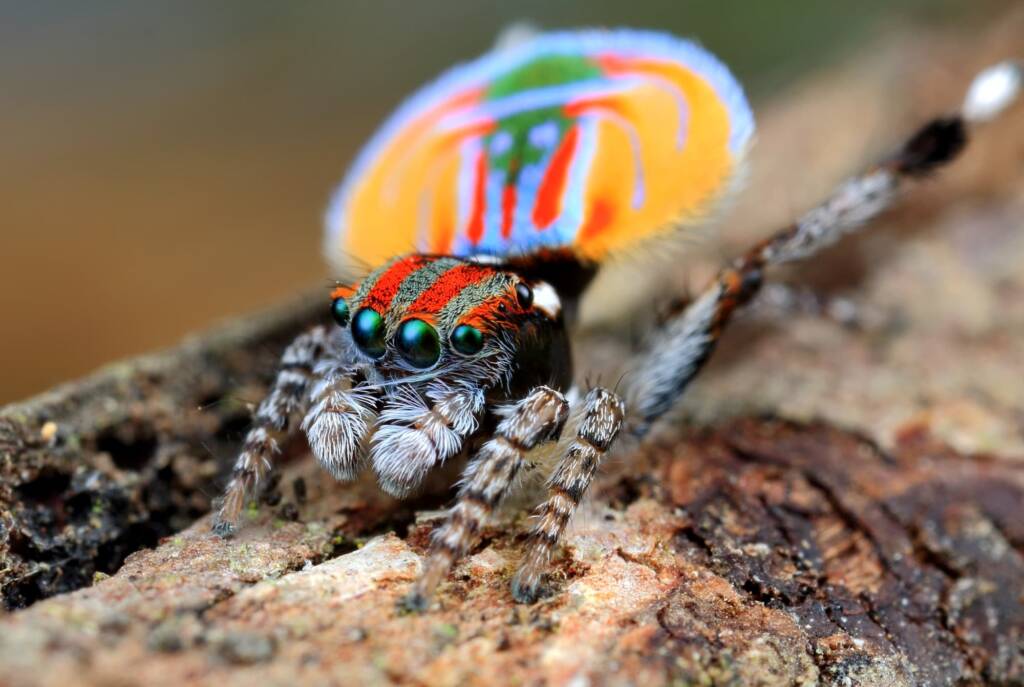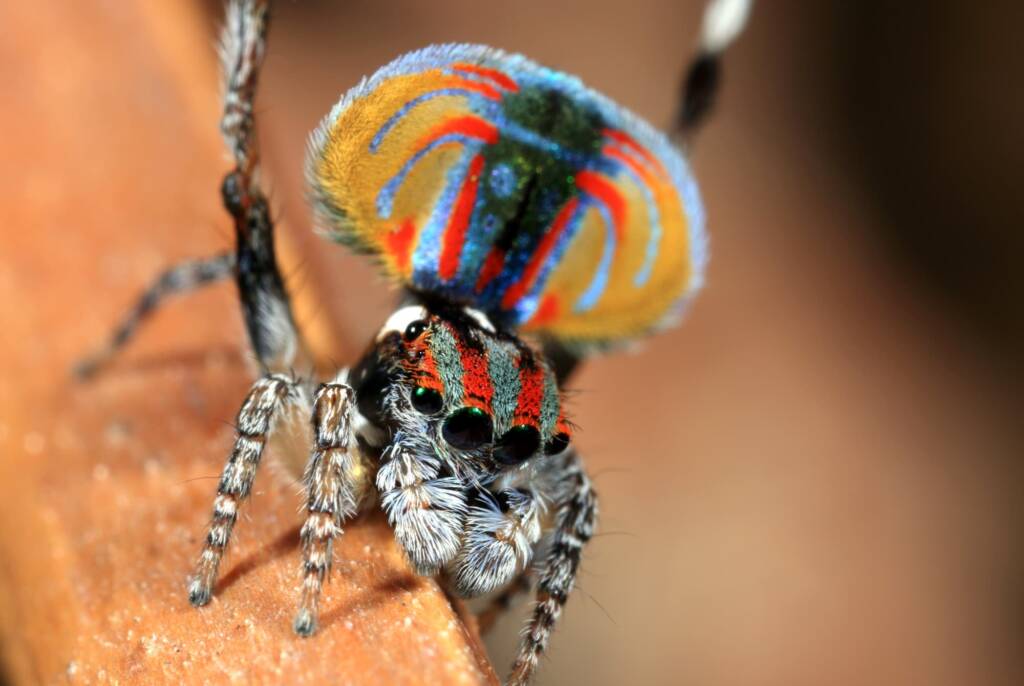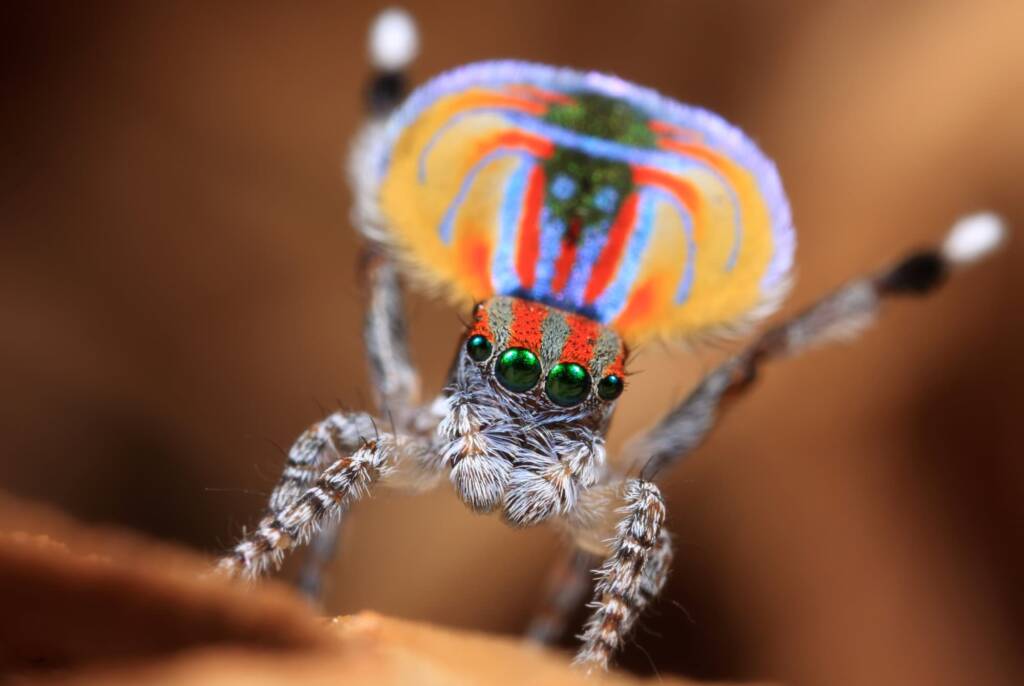Maratus volansMaratus volans Dancing Maratus volans Female & Immature Maratus volans Prey
The Flying Peacock Spider (Maratus volans) belong to the family Salticidae, a group of spiders known as “jumping spiders”, the genus Maratus are a group known as “peacock spiders”.
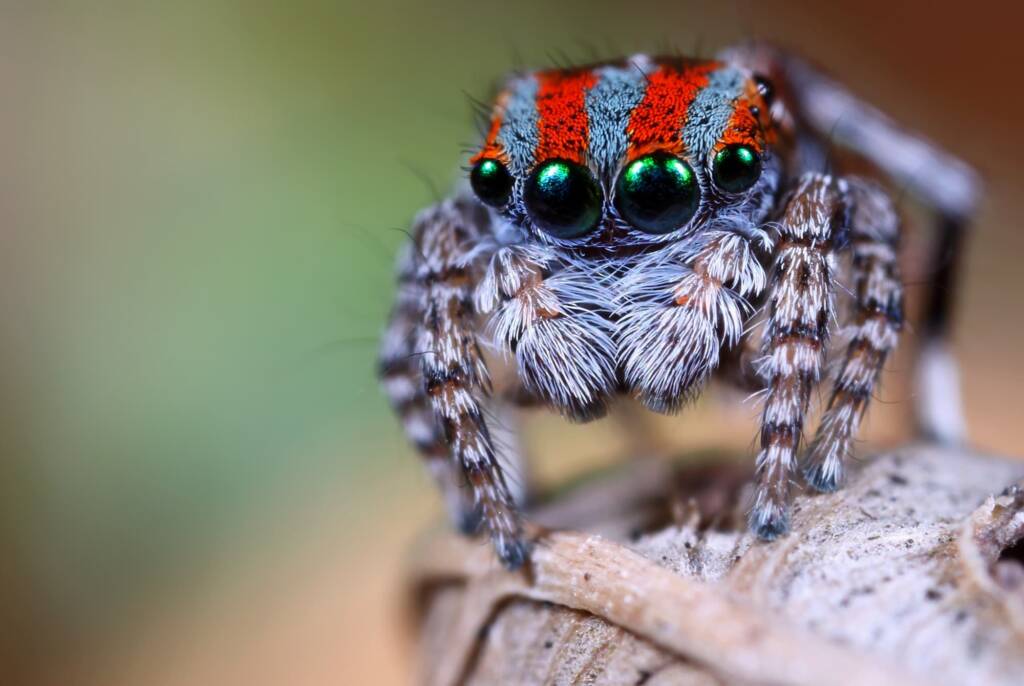
Once described as “Gliding Spider (Saitis volans)”, it was thought that the flaps on the male when extended, allowed the male to jump and then glide with their flaps extended.
The species name volans relates to the fact that Pickard-Cambridge (1874) was told that this spider used its flaps to fly (although he also guessed that they had a “sexual” function). A black and white sketch of a Maratus volans specimen was figured in an early guide to flying animals of the British Museum (Ridewood 1912). This was the only peacock spider featured in a popular guide to Australian spiders by Mascord (1970), who still thought that it might fly.3
PECKHAMIA 148.2, 15 September 2017, 1―24
So despite the myth, the ‘Flying Peacock Spider’ does not fly. The so called ‘wings’ are flaps that are used for courtship display.
The males have flap-like extensions of the abdomen that are folded down. During mating, the male will raises his abdomen, then expands and raises the flaps. It is this colourful display, together with the leg waving and the swaying from side to side, that has made these spiders popular, capturing the imagination of the general population.
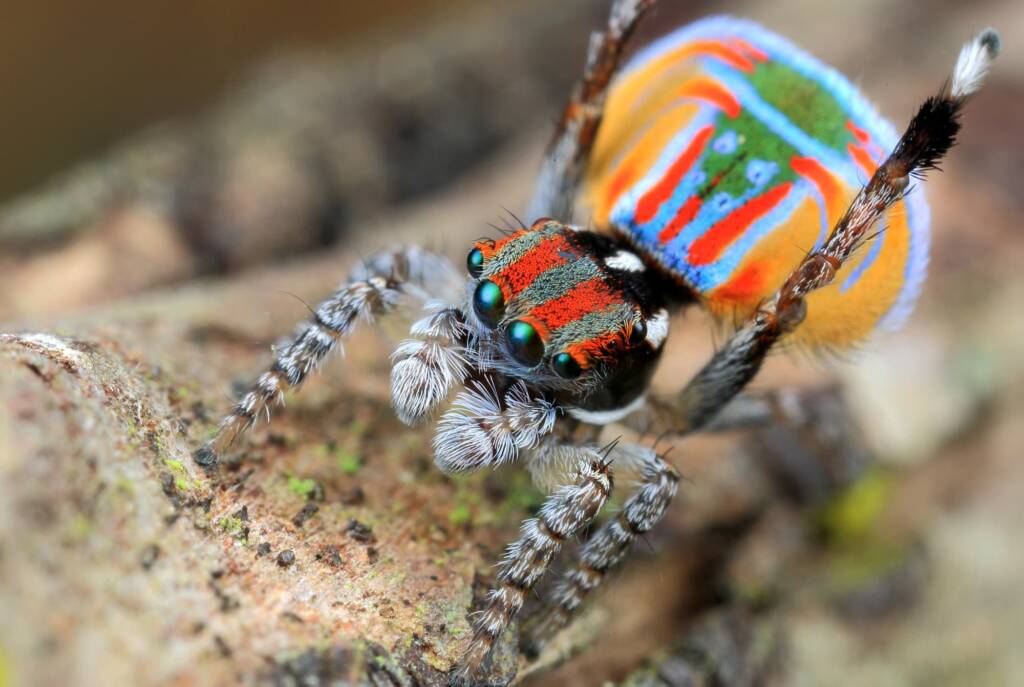
The body length of both of the sexes is between 4 to 5 mm. Unlike the colourful mature male, the female and the immature spiders are brown in colour.

Peacock spiders have eight eyes that are equipped with a telephoto lens, tiered retina, and a specialized visual system, allowing them to see the full visible spectrum as well as those in the UV-range. They have a set of primary eyes that provide acute vision and secondary eyes that aid them to detect motion.
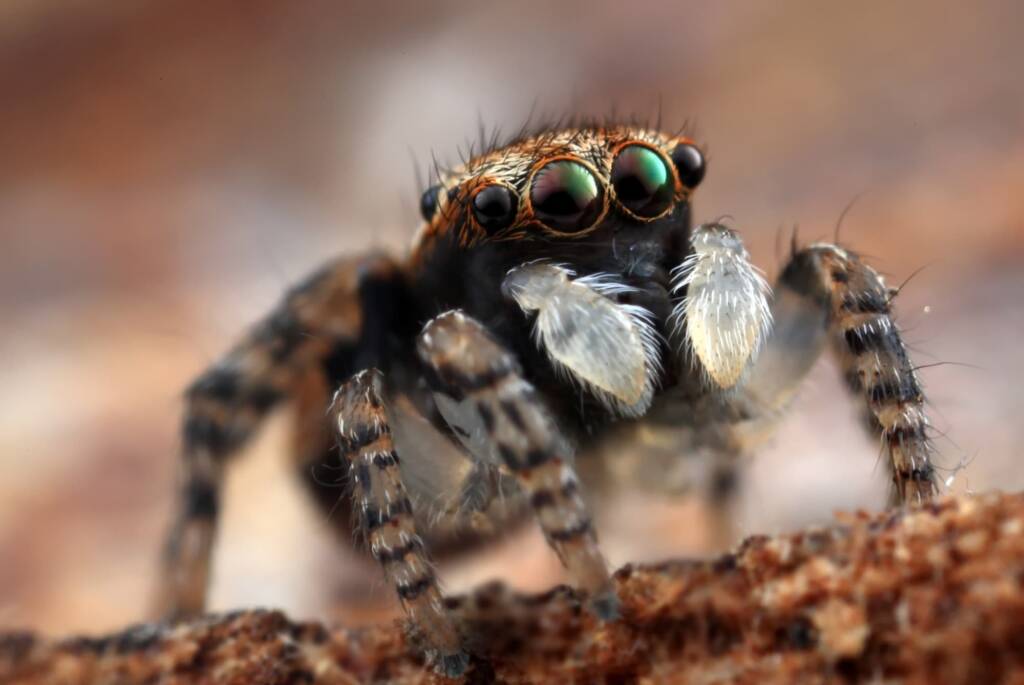
Native to Australia, their main distribution is down the east coast of Australia, from Queensland to Victoria, where they are found in a variety of habitats.
They prefer open forest with a covering of leaf litter and a sandy base. Spring is when you will start to see the male peacock spiders in colour, this occurs after their final moult when they become mature. When bush walking keep your eyes open for these spiders, as they are small (around 5mm). They are quite common in the reserves, national parks and park lands. They are normally found around leaf litter that is no higher than your knees.

- Scientific classification
- Kingdom: Animalia
- Phylum: Arthropoda
- Subphylum: Chelicerata
- Class: Arachnida
- Order: Araneae
- Suborder: Araneomorphae
- Infraorder: Entelegynae
- Superfamily: Salticoidea
- Family: Salticidae
- Subfamily: Salticinae
- Tribe: Euophryini
- Genus: Maratus
- Species: Maratus volans

Footnote & References
- Photographs (Project Maratus) © Michael Doe
- Michael Doe on Flickr – spiderphotography21 and michael doe (Project Maratus)
- Catalogue of the Australian peacock spiders (Araneae: Salticidae: Euophryini: Maratus, Saratus), version 2, Jürgen C. Otto and David E. Hill, PECKHAMIA 148.2, 15 September 2017, 1―24 ISSN 2161―8526 (print) ISSN 1944―8120 (online) urn:lsid:zoobank.org:pub:57925A87-9063-425E-AB9A-1DEC3696AA38 (registered 7 SEP 2017), https://peckhamia.com/peckhamia/PECKHAMIA_148.2.pdf
- Flying Peacock Spider (Maratus volans), iNaturalistAU, https://inaturalist.ala.org.au/taxa/53605-Maratus-volans
- Maratus volans, Wikipedia, https://en.wikipedia.org/wiki/Maratus_volans
- Peacock Spider, Jurgen Otto, https://www.peacockspider.org
- A Field Guide to Spiders of Australia, Authors Robert Whyte, Gregory John Anderson, Publisher: CSIRO Publishing ISBN: 9780643107076, https://www.researchgate.net/publication/329139666_A_Field_Guide_to_Spiders_of_Australia
- Maratus volans (O. Pickard-Cambridge 1874) Flying Peacock Spider, Arachne.org.au, https://www.arachne.org.au/01_cms/details.asp?viewMode=printable&ID=2451 (this site is no longer active. Some content can be viewed on Wayback Machine)
- On the Origins of Art – Actual Size I Maratus Volans, 2016, Maria Fernanda Cardoso, Museum of Contemporary Art (MCA), https://www.mca.com.au/artists-works/works/2018.14/
Maratus volansMaratus volans Dancing Maratus volans Female & Immature Maratus volans Prey
Dolophones spDolophones conifera Dolophones turrigera
SpidersIndex of Spider Images Spiders in Australia Araneidae — Orb Weavers Arkys Australian Huntsman Spider Barking Spider Black House Spider Carepalxis sp Celaenia sp Crab Spiders Deinopidae — Net-casting Spiders Dolomedes sp Dolophones sp Flower Spiders Hackled Orbweavers (Uloboridae) Jewel Spider Jumping Spider Long Jawed Spider (Tetragnatha sp) Lynx Spider (Oxyopes) Mangrovia albida Maratus volans Missulena occatoria (Red-headed Mouse Spider) Miturgidae Nicodamidae (Red and Black Spider) Ogre-faced Net-casting Spider Poltys sp (Twig Spider) Redback Spider Scorpion-tailed Spider (Arachnura higginsi) Thomisidae Tiger Spider (Trichonephila plumipes) White-spotted Swift Spider (Nyssus albopunctatus) Wolf Spider


